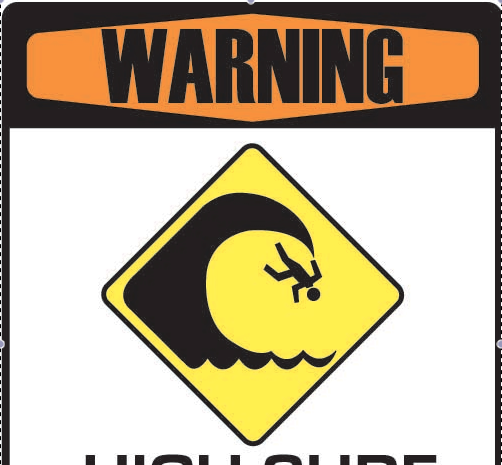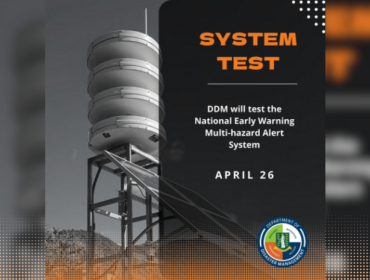26th January 2019 – Whilst stable conditions will prevail across the area, a strong surface high pressure system will continue to maintain a moderate to fresh wind flow and elevated sea conditions thus keeping a High Surf Advisory in place.
Long northeast swells of moderate height are reaching the islands. These swells are causing dangerous breaking waves (surfs) and life-threatening rip currents.
Seas: 2 to 2.8 metres (7 to 9 feet), occasionally higher, reaching 3.5 metres (12 feet) mainly over the next 24 hours. Seas will fall to 1.5 to 2 metres (5 to 7 feet) by Monday.
Swells: Swells northerly, 1.2 to 2 metres (4 to 6 feet) and occasionally higher. Swells have peaked and are on the decline.
Surfs(Breaking Swells): Over 2 metres (6 feet). These conditions will be conducive for dangerous rip currents. Please note that surfs could be as much as twice the height of swells.
Coastal flooding: High tides combine with onshore wind and swell actions will result in localized coastal flooding and beach erosion.
Locations (to be) affected: Exposed and shallow northwest, north and northeast facing coastlines.
Timing: Until Sunday.
Impacts: (possible/likely/expected): Loss of life – strong currents that can carry even the strongest swimmers out to sea; injuries to beachgoers; beach erosion; sea water splashing onto low lying coastal roads; beach closures; localized disruptions to marine recreation and businesses; financial losses; damage to coral reefs; salt water intrusion and disruptions to potable water from desalination. High surfs can knock spectators off exposed rocks and jetties. Breaking waves may occasionally impact harbors making navigating the harbor channel dangerous.
Precautionary/preparedness actions: High surf advisory means that dangerous surfs of 2 to 3 metres or 6 to 10 feet will affect coastlines in the advisory area, producing hazardous conditions. Beachgoers should be extremely cautious; bathe only where lifeguards are present or the sheltered, less affected southern beaches. Rip currents are powerful channels of water flowing quickly away from shore, which occur most often at low spots or breaks in the sandbar and near structures such as groins, jetties and piers. If caught in a rip current, relax and float. Don`t swim against the current. If able, swim in a direction following the shoreline. If unable to escape, face the shore and call or wave for help.
Persons at home and abroad are encouraged to download the DDM’s Alert app in the Apple App store or Google Play store to receive updates of any hazards affecting the Territory.
You can also visit the DDM’s webpage at www.bviddm.com and subscribe for updates or like us on Facebook at www.facebook.com/bvi.ddm.
Disclaimer: The Department of Disaster Management (DDM) is not an official Meteorological Office. The Information disseminated by the Department is gathered from a number of professional sources used or contracted by the DDM to provide such information. This information is to be used as a guide by anyone who has interest in local weather conditions. By no means can the DDM or the BVI Government be held accountable by anyone who uses this information appropriately for legal evidence or in justification of any decision which may result in the loss of finances, property or life.





